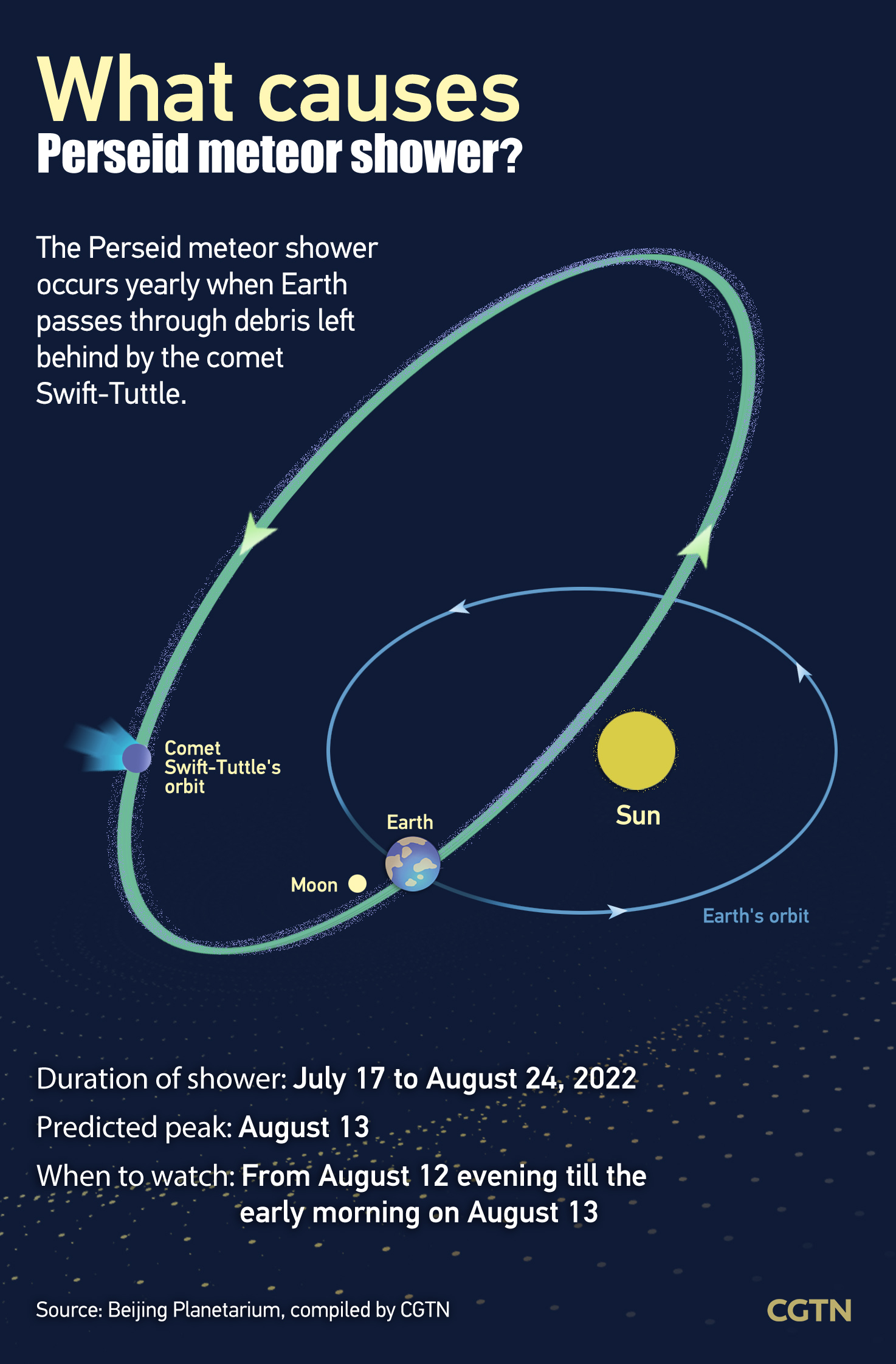Every year, the Perseid meteor shower, or the Perseids, greets Earth from mid-July to late August. The peak shower will be around August 13 this year, according to the Beijing Planetarium.
The Perseids, together with the Quadrantids and the Geminids, are the three major meteor showers in the Northern Hemisphere. The former brings a more comfortable observation experience as it occurs in summer, while the latter two appear in winter.
Meteor showers occur when Earth passes debris left behind by comets. As the tiny grains of dust or rock enter the atmosphere at high speeds, the friction between them and the air makes them burn up, producing flashes across the sky.
The Perseids are caused by a large comet, the Swift-Tuttle, which was discovered in 1862. The comet takes 133 years to orbit the sun and was last visible in 1992 and will return again in 2125, according to NASA.

Like many other meteor showers, the Perseids were named after the point in the sky where they appear to radiate – the constellation Perseus, in this case.
Theoretically, the period from August 12 evening (Beijing time) till the dawn on August 13 will be suitable for observing the Perseids, the Beijing Planetarium said.
However, despite the radiant point continuing to rise after midnight, which is supposed to enable more meteors to be seen, the moonlight could distract the observation of the meteors – especially a full moon occurring on August 12.
The bright moonlight would drown out the fainter meteors, making the number of dozens visible per hour likely to be in the single digits, Beijing Daily reported, citing Wang Yumin, an expert from Beijing Ancient Observatory, as saying.
Even though not many as last year when there was no influence from the moonlight, catching a few shooting stars during the peak can still bring an enjoyable experience.
(Edited by Chen Yurong)

